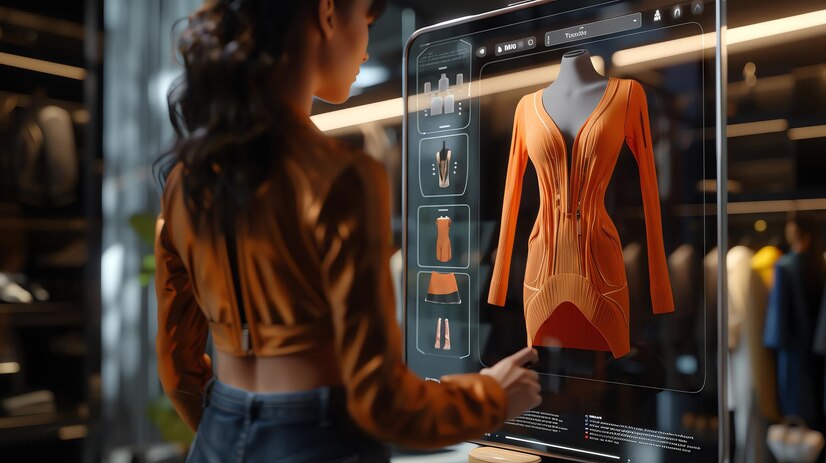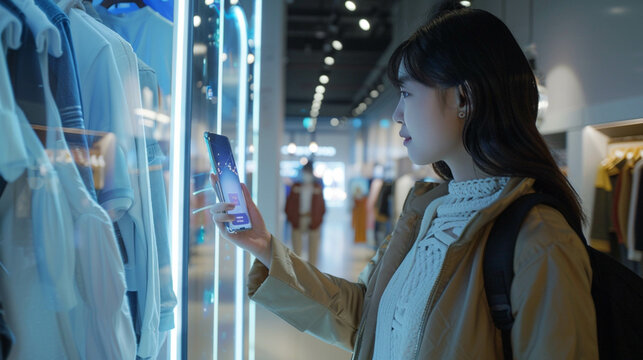Out of all the fashion trends, customization has become a very popular one. Every sector of life is touched by technology innovations and the clothing market is not an exception. Personalized apparel provides customers with the freedom to showcase their individual style and unique tastes, thus technology is a vital part of this unique personalisation experience.
Understanding Custom Apparel
Custom apparel refers to when clothing items are designed and created based on what individuals want. This will include personal T-shirts, bespoke suits, and tailor-made dresses. Other advantages associated with custom apparel include a perfect fit, unique designs, and a way of showing your personal style.
Technology in Design
Designing custom apparel requires proper tools. First, design software like Adobe Illustrator and CorelDRAW provides designers with the capability of creating a number of complex patterns and styles. In addition, 3D modeling software provides customers with virtual fittings wherein one can view the style and fitting of a garment before going on to produce it.

Digital Printing Technology
Digital printing has revolutionized custom apparel. Direct-to-garment (DTG) printing allows for high-quality prints directly on fabric, making it perfect for custom t-shirts. Sublimation printing, on the other hand, transfers designs onto garments using heat, ensuring vibrant and durable prints.
Laser Cutting and Engraving
Laser technology brings precision to the table. Laser cutting machines can cut fabric with extreme accuracy, creating intricate patterns that would be difficult to achieve by hand. Laser engraving adds a unique touch, perfect for adding logos or personal messages to apparel.
Automation in Manufacturing
The apparel industry is seeing a rise in automation. Robots can now handle tasks such as cutting, sewing, and assembling garments, increasing efficiency and consistency. AI and machine learning are also being used to detect defects and ensure quality control throughout the production process.
Supply Chain and Inventory Management
The Internet of Things (IoT) plays a significant role in managing the supply chain. Sensors and connected devices provide real-time data on inventory levels and production status. This helps manufacturers optimize their processes and reduce waste.
E-commerce Integration
E-commerce platforms are now offering extensive customization options. Websites like The Apparel Factory allow customers to design their apparel online, choosing from a range of styles, colors, and prints. This seamless integration of customization in e-commerce makes it accessible to everyone.
Personalization through Data Analytics
These tools are also ideal for those looking to edit images to enhance their designs. First, design software like Adobe Illustrator and CorelDRAW provides designers with the capability of creating a number of complex patterns and styles.
Data analytics helps brands understand their customers better. By collecting data on customer preferences and behaviors, companies can offer personalized recommendations and create products that resonate with their audience. Predictive analytics can also forecast trends, ensuring that the latest styles are available for customization.
Augmented Reality (AR) and Virtual Reality (VR)
AR and VR are enhancing the shopping experience. Virtual try-ons allow customers to see how a garment looks on them without physically trying it on. This technology is particularly useful for online shoppers, reducing the uncertainty associated with purchasing clothing online.
Sustainability through Technology
Technology also promotes sustainability in fashion. Eco-friendly materials and production processes are now more accessible. Precision in production reduces fabric waste, and digital printing uses less water and energy compared to traditional methods.
Customer Engagement and Feedback
Social media and online reviews are crucial for engaging with customers. Interactive platforms allow users to customize apparel and share their designs on social media. This not only enhances the customer experience but also provides valuable feedback for continuous improvement.

Challenges and Solutions
While technology offers numerous benefits, there are challenges too. The initial cost of advanced machinery and software can be high. However, the long-term benefits of efficiency and customization often outweigh these costs. Future trends point towards more affordable and accessible technologies for small businesses and individual designers.
Case Studies
Many apparel companies have successfully integrated technology into their customization processes. For example, Nike’s “Nike By You” platform allows customers to design their shoes. Similarly, Levi’s uses laser technology for custom denim, significantly reducing production time and waste.
Conclusion
The fusion of technology and custom apparel is transforming the fashion industry. From design and production to customer engagement, technology enhances every step of the process. As advancements continue, the future looks bright for personalized fashion.


